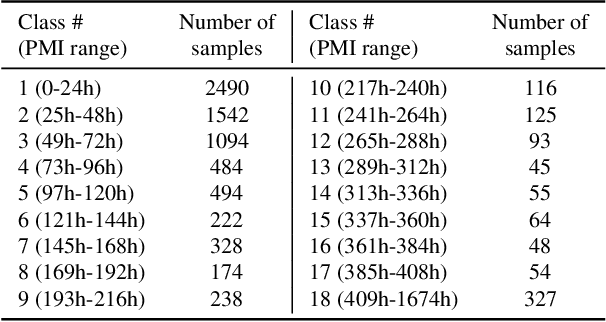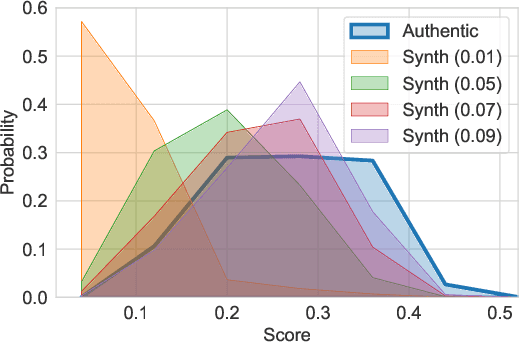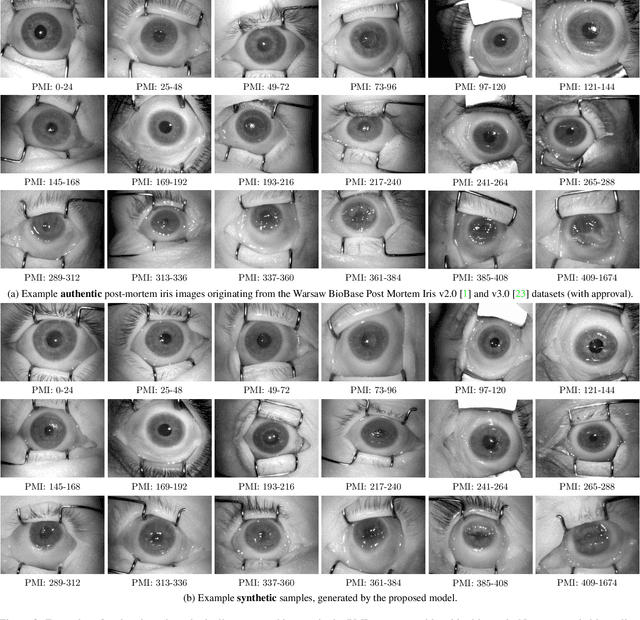Rasel Ahmed Bhuiyan
Iris Recognition for Infants
Jan 02, 2025



Abstract:Non-invasive, efficient, physical token-less, accurate and stable identification methods for newborns may prevent baby swapping at birth, limit baby abductions and improve post-natal health monitoring across geographies, within the context of both the formal (i.e., hospitals) and informal (i.e., humanitarian and fragile settings) health sectors. This paper explores the feasibility of application iris recognition to build biometric identifiers for 4-6 week old infants. We (a) collected near infrared (NIR) iris images from 17 infants using a specially-designed NIR iris sensor; (b) evaluated six iris recognition methods to assess readiness of the state-of-the-art iris recognition to be applied to newborns and infants; (c) proposed a new segmentation model that correctly detects iris texture within infants iris images, and coupled it with several iris texture encoding approaches to offer, to the first of our knowledge, a fully-operational infant iris recognition system; and, (d) trained a StyleGAN-based model to synthesize iris images mimicking samples acquired from infants to deliver to the research community privacy-safe infant iris images. The proposed system, incorporating the specially-designed iris sensor and segmenter, and applied to the collected infant iris samples, achieved Equal Error Rate (EER) of 3\% and Area Under ROC Curve (AUC) of 99\%, compared to EER$\geq$20\% and AUC$\leq$88\% obtained for state of the art adult iris recognition systems. This suggests that it may be feasible to design methods that succesfully extract biometric features from infant irises.
Forensic Iris Image-Based Post-Mortem Interval Estimation
Apr 15, 2024Abstract:Post-mortem iris recognition is an emerging application of iris-based human identification in a forensic setup. One factor that may be useful in conditioning iris recognition methods is the tissue decomposition level, which is correlated with the post-mortem interval (PMI), i.g., the number of hours that have elapsed since death. PMI, however, is not always available, and its precise estimation remains one of the core challenges in forensic examination. This paper presents the first known to us method of PMI estimation directly from forensic iris images. To assess the feasibility of the iris-based PMI estimation, convolutional neural networks-based models (VGG19, DenseNet121, ResNet152, and Inception_v3) were trained to predict the PMI from (a) near-infrared (NIR), (b) visible (RGB), and (c) multispectral forensic iris images. Models were evaluated following a 10-fold cross-validation in (S1) sample-disjoint, (S2) subject-disjoint, and (S3) cross-dataset scenarios. We found that using the multispectral data offers a spectacularly low mean absolute error (MAE) of approximately 3.5 hours in scenario (S1), a bit worse MAE of approximately 17.5 hours in scenario (S2), and an MAE of approximately 69.0 hours of in the scenario (S3). This suggests that if the environmental conditions are favorable (e.g., bodies are kept in low temperatures), forensic iris images provide features that are indicative of the PMI and can be automatically estimated. The source codes and model weights are made available with the paper.
Forensic Iris Image Synthesis
Dec 07, 2023



Abstract:Post-mortem iris recognition is an emerging application of iris-based human identification in a forensic setup, able to correctly identify deceased subjects even three weeks post-mortem. This technique thus is considered as an important component of future forensic toolkits. The current advancements in this field are seriously slowed down by exceptionally difficult data collection, which can happen in mortuary conditions, at crime scenes, or in ``body farm'' facilities. This paper makes a novel contribution to facilitate progress in post-mortem iris recognition by offering a conditional StyleGAN-based iris synthesis model, trained on the largest-available dataset of post-mortem iris samples acquired from more than 350 subjects, generating -- through appropriate exploration of StyleGAN latent space -- multiple within-class (same identity) and between-class (different new identities) post-mortem iris images, compliant with ISO/IEC 29794-6, and with decomposition deformations controlled by the requested PMI (post mortem interval). Besides an obvious application to enhance the existing, very sparse, post-mortem iris datasets to advance -- among others -- iris presentation attack endeavors, we anticipate it may be useful to generate samples that would expose professional forensic human examiners to never-seen-before deformations for various PMIs, increasing their training effectiveness. The source codes and model weights are made available with the paper.
 Add to Chrome
Add to Chrome Add to Firefox
Add to Firefox Add to Edge
Add to Edge